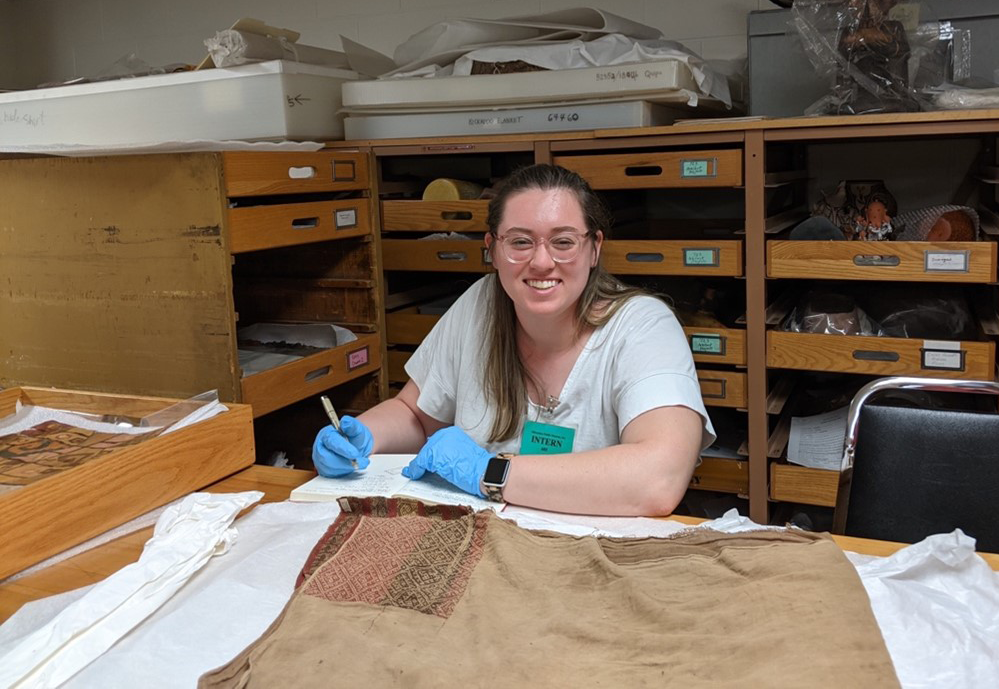2022 Ritzenthaler Museum Research Internship Award
 Katie Cianciola is the 2022 Ritzenthaler Museum Research Internship Award Recipient. Over this summer, she continued examining a portion of the MPM’s Malcolm K. Whyte Collection which primarily consists of over 2,000 archaeological textiles, ceramics, metalwork, featherwork items from Peru. Katie has chosen to focus her thesis on the needle-knitted and embroidered objects from the Nasca time period (BCE 200-700 CE).
Katie Cianciola is the 2022 Ritzenthaler Museum Research Internship Award Recipient. Over this summer, she continued examining a portion of the MPM’s Malcolm K. Whyte Collection which primarily consists of over 2,000 archaeological textiles, ceramics, metalwork, featherwork items from Peru. Katie has chosen to focus her thesis on the needle-knitted and embroidered objects from the Nasca time period (BCE 200-700 CE).
One of the tasks she began with involved recording catalog documentation consisting of the donor, date, object description, and present location, as well as documentation on the donation’s history and the formation of the MPM’s Pre-Columbian Hall exhibits. She is now moving into making detailed descriptions of the almost 300 thesis items noting their coloration, patterns, fiber identification, and dimensions. Many of the needle-knitted and embroidered objects at the MPM can be broken down into subject matter categories including flowers, birds, and worms, trophy heads, and geometric or bean patterns. She will also carry out research into symbolism of the iconography on Nasca textiles and seek comparisons in iconography on ceramics as well.
Katie was interested in developing a thesis on Peruvian textiles after first studying them during a field school in the north-central Peruvian highlands. She was introduced to the needle-knitted collection by MPM Anthropology Curator Dawn Scher Thomae and textile specialist Diane Newbury as they had not been previously researched. Katie was guided by her advisor Jean Hudson, Scher Thomae, Newbury, and other colleagues, to look into fertility symbolism with textiles, as well as the influence of nature on human culture. Her thesis was prompted by the new MPM’s focus with on “the interconnectedness of nature and culture.” She is interested in understanding how the natural environment of the Nasca can be seen in textile iconography and through the materials used for creating them.
Another component of this project involves her interests in the collections management of textiles. Through her review of the various Peruvian textile storage drawers, Katie will make sure that all textiles are accounted for in the museum’s documentation, as well as make recommendations or perform minor storage modifications to best suit the objects. These treatments might include untangling bundles of textiles and laying them flat on acid-free cardstock in individual bags or removing metal tags previously used to identify textiles. Katie hopes that this work may benefit the collection as the museum prepares to move locations and that she can make recommendations for future storage or conservation treatments.